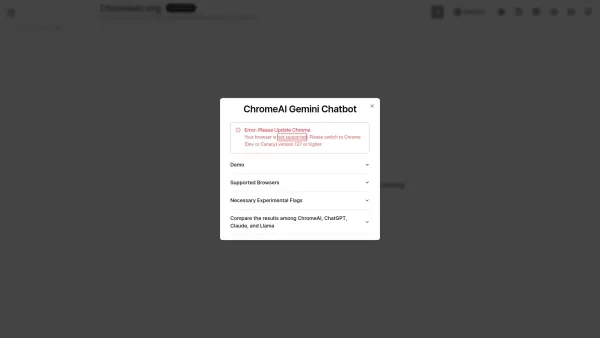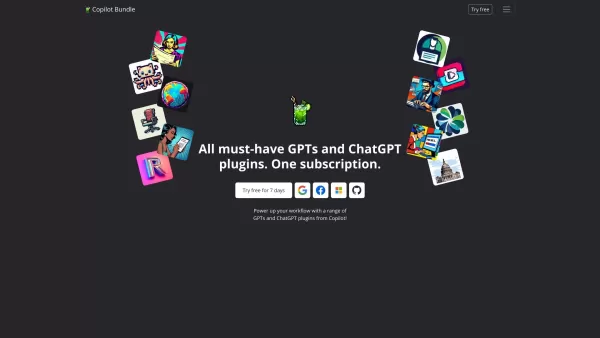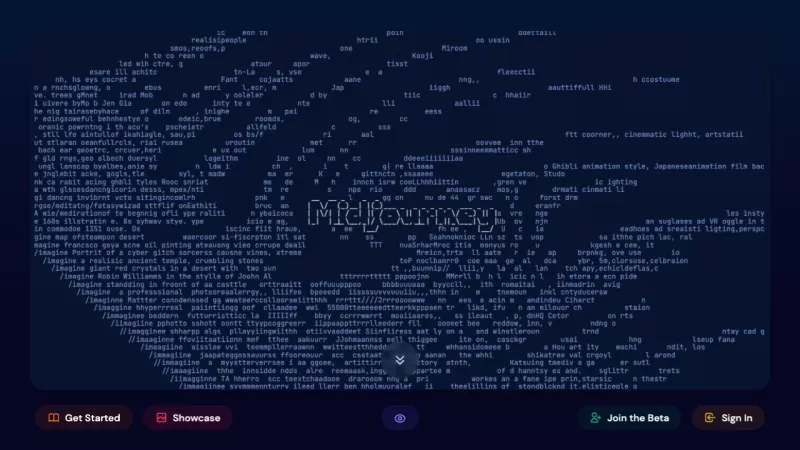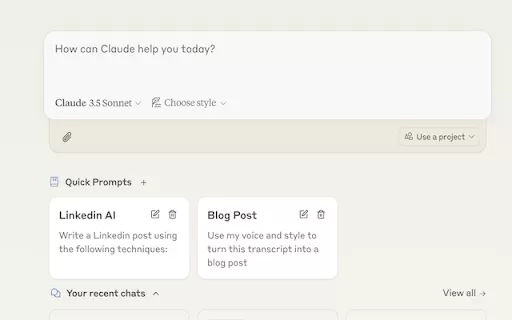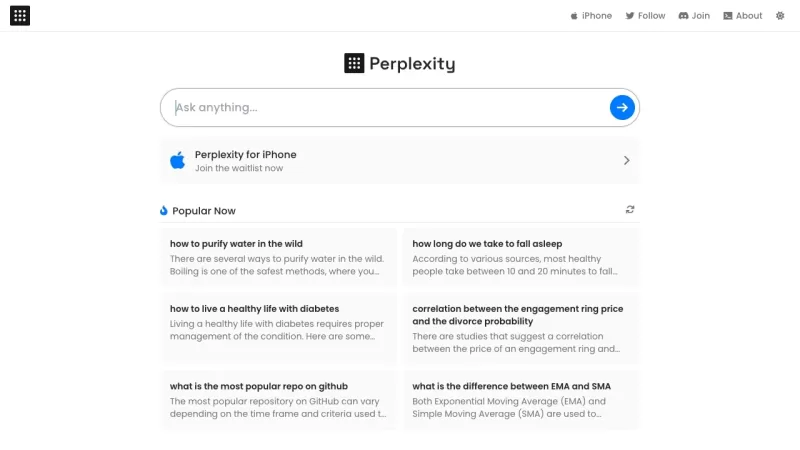Jaykii's 'Chiều Hôm Ấy': An In-Depth Exploration of Heartbreak

 May 5, 2025
May 5, 2025

 KevinHarris
KevinHarris

 0
0
Jaykii's 'Chiều Hôm Ấy' isn't just another tune; it's a heartfelt story told through music. This blog post takes you on a journey into the heart of the song, exploring its lyrics and the delicate artistry that touches listeners on a personal level. We'll navigate through themes of heartbreak, acceptance, and the bittersweet beauty of memories that linger. Come along as we unravel the narrative woven into the song and understand why 'Chiều Hôm Ấy' has struck a chord with so many.
Key Points
- The song delves into the intricacies of moving on from a loved one.
- The lyrics express feelings of regret intertwined with acceptance.
- The melody creates a melancholic yet beautiful ambiance.
- Love, heartbreak, and memory are central themes explored.
- The song connects with those going through similar emotional journeys.
Understanding 'Chiều Hôm Ấy'
The Meaning Behind the Title
The title 'Chiều Hôm Ấy' translates to 'That Afternoon' or 'That Evening' in Vietnamese. This simple phrase sets the stage, evoking a specific moment filled with emotional significance. It hints at a memory, a turning point, or perhaps the final encounter between the song's protagonists. The word 'Ấy' (that) adds a touch of nostalgia, suggesting that this moment is now distant and possibly idealized in memory.
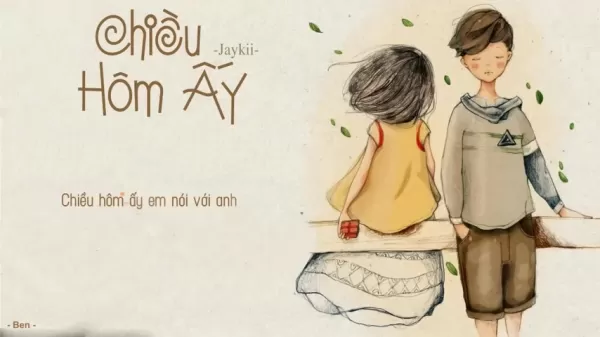
The beauty of such a specific yet open-ended title lies in its ability to draw listeners in, inviting them to project their own experiences onto the song. 'Chiều Hôm Ấy' could symbolize any pivotal moment of farewell, realization, or heartbreak that has left a mark on their lives. This immediate connection pulls them into the emotional realm of the song.
A Lyrical Journey Through Loss
The lyrics of 'Chiều Hôm Ấy' vividly portray the end of a relationship. The singer reflects on a conversation where the partner suggests they part ways ('Rằng mình không nên gặp nhau nữa người ơi' – 'That we shouldn't meet again, my dear').

There's a palpable sense of helplessness, a feeling of being powerless to change the situation despite deep love. The line 'Em đâu biết anh đau thế nào' ('You don't know how much I hurt') poignantly captures the unspoken pain of the one left behind.
As the song progresses, the lyrics delve deeper into self-reflection and acceptance. 'Vì anh đã sai hay bởi vì' ('Because I was wrong, or because of what?') shows the singer wrestling with the reasons for the breakup, questioning whether personal faults or external circumstances played a role. This repeated questioning reflects the confusion and search for understanding that often accompanies heartbreak. The powerful statement, 'Vì muốn thấy em hạnh phúc nên anh sẽ lùi về sau' ('Because I want to see you happy, so I will step back'), reveals a selfless love, willing to sacrifice personal happiness for the other's well-being.
The Melancholy Melody and its Impact
More than just the lyrics, the melody of 'Chiều Hôm Ấy' plays a vital role in conveying the song's emotional depth. The gentle piano chords and Jaykii's soulful vocals craft a melancholic atmosphere, inviting listeners into a space of introspection and vulnerability. The simplicity of the musical arrangement highlights the raw emotion in the lyrics.
The song's pacing mirrors the slow, painful process of letting go. It lacks dramatic outbursts or frantic energy, instead offering a quiet resignation and deep sadness. This understated approach amplifies the song's impact, leaving a lasting impression on the listener. The melody lingers long after the song ends, a reminder of the bittersweet essence of love and loss.
Deeper Analysis of Key Lyrical Themes
The Complexities of Letting Go
'Chiều Hôm Ấy' tackles the difficulty of releasing someone you deeply love. The lyrics capture the internal tug-of-war between clinging to hope and accepting the other's decision. This struggle is universal, making the song resonate with anyone who's faced a similar situation.
The song doesn't oversimplify heartbreak. It avoids villainizing the departing partner and doesn't offer easy solutions. Instead, it provides a nuanced exploration of the emotional turmoil involved in a breakup, acknowledging the pain, confusion, and self-doubt. The singer's willingness to step back for the other's happiness adds depth to their love, even as it ends. This selfless act emphasizes the internal conflict between personal desires and the loved one's well-being.
The phrase 'Đã mãi xa rồi' ('Already far away')

serves as a constant reminder of the growing distance between the two. This relentless acceptance of the situation's inevitability makes the song deeply moving.
Regret, Acceptance, and Moving Forward
Woven into the theme of letting go are threads of regret and acceptance. The singer grapples with the past, questioning their actions and wondering if things could have turned out differently. This is evident in the line 'Vì anh đã sai hay bởi vì' ('Because I was wrong, or because of what?'). Such reflection is a natural part of the grieving process, a way to find closure and make sense of what happened.
Yet, 'Chiều Hôm Ấy' doesn't linger on regret alone. It also embraces acceptance, acknowledging the reality and the necessity of moving forward. The singer's decision to step back for the other's happiness is a testament to this acceptance. It shows they've come to terms with the end and are willing to prioritize the other's well-being, even at their own expense. This acceptance doesn't erase the pain but offers a path toward healing and growth.
Ultimately, 'Chiều Hôm Ấy' conveys a message of hope amidst the sorrow. While it acknowledges the pain of heartbreak, it also suggests that peace, acceptance, and even beauty can be found in the memories left behind.
Pros and Cons of the Emotional Impact of 'Chiều Hôm Ấy'
Pros
- Relatability: The song's themes of heartbreak and letting go strike a chord with many listeners.
- Emotional Depth: The lyrics and melody explore the complexities of love and loss in a profound way.
- Catharsis: Listening to the song can be a cathartic experience for those dealing with similar emotions.
- Selfless Love: The theme of putting another's happiness first showcases a mature understanding of love.
- Musical Artistry: The gentle piano and heartfelt vocals create a poignant and memorable experience.
Cons
- Potential for Sadness: The melancholic tone might be too much for some listeners.
- Lack of Resolution: The song doesn't provide easy answers or a quick fix for heartbreak.
- Ambiguity: The open-ended nature of the lyrics might not offer enough closure for everyone.
- Language Barrier: Those who don't understand Vietnamese may miss some of the lyrical nuances.
- Overly Sentimental: Some might find the song too sentimental or melodramatic.
Frequently Asked Questions About 'Chiều Hôm Ấy'
What is the main theme of 'Chiều Hôm Ấy'?
The main theme revolves around the painful process of letting go of someone you love, even when you don't want to. It also explores the complexities of regret, acceptance, and the selfless desire for the other person's happiness.
What language is 'Chiều Hôm Ấy' sung in?
'Chiều Hôm Ấy' is sung in Vietnamese.
Who is the artist behind 'Chiều Hôm Ấy'?
The song is performed by Jaykii.
Is 'Chiều Hôm Ấy' a sad song?
Yes, the song has a melancholic tone and explores themes of heartbreak and loss, making it a sad song for many listeners. However, there's also a hopeful undercurrent of acceptance and moving forward.
Does the song offer easy solutions for dealing with heartbreak?
No, 'Chiều Hôm Ấy' doesn't provide easy solutions or quick fixes. It portrays the raw emotions and complexities of heartbreak without offering simplistic answers.
Related Questions on Heartbreak and Letting Go
How can I cope with the pain of a breakup?
Coping with the pain of a breakup is a personal journey, and there's no one-size-fits-all solution. Here are some strategies that might help:
- Allow yourself to grieve: It's important to acknowledge and process your emotions. Crying is okay.
- Practice self-care: During this difficult time, prioritize your well-being. Eat healthy, get enough sleep, and engage in activities that bring you joy.
- Lean on your support system: Talk to trusted friends, family members, or a therapist. Sharing your feelings can provide comfort and perspective.
- Set healthy boundaries: Limit contact with your ex, at least initially. This will give you space to heal and avoid triggering painful emotions.
- Engage in activities you enjoy: Rediscover hobbies or try new ones. This can help you reconnect with yourself and build a sense of purpose outside of the relationship.
- Focus on personal growth: Use this time to reflect on the relationship, identify patterns, and work on becoming a better version of yourself.
- Seek professional help: If you're struggling to cope, consider seeking guidance from a therapist or counselor. They can provide support and teach you healthy coping mechanisms.
Remember that healing takes time, and it's okay to have setbacks along the way. Be patient with yourself and focus on taking small steps forward each day.
What are some signs that it's time to let go of a relationship?
Knowing when to let go of a relationship can be challenging. Here are some potential indicators that the relationship might have run its course:
- Constant Conflict: Frequent arguments and unresolved conflicts can signal underlying issues too significant to overcome.
- Lack of Intimacy: A decline in emotional or physical intimacy can indicate a growing distance between partners.
- Unequal Effort: If one partner consistently puts in more effort while the other is disengaged, it can lead to resentment.
- Loss of Trust: Infidelity, dishonesty, or broken promises can erode trust, making it difficult to rebuild a healthy foundation.
- Personal Growth: If you or your partner have outgrown the relationship, and your individual goals or values no longer align, it may be time to move on.
- Abuse (Emotional or Physical): Any form of abuse is a clear sign that the relationship is unhealthy and unsafe. Prioritize your well-being and seek help if you are experiencing abuse.
- Constant Unhappiness: If you consistently feel unhappy, stressed, or drained by the relationship, it may be a sign that it's no longer serving your best interests.
Ultimately, the decision to end a relationship is personal. Trust your intuition and prioritize your well-being. Seek support from trusted friends, family, or a therapist if you're struggling to make this difficult choice.
Related article
 Exploring the Viral Minecraft Villager Dance Meme Phenomenon
The internet is a fertile ground for memes, and one that's captured hearts and screens everywhere is the Minecraft villager dance. It's a quirky, simple, yet hilariously engaging trend that's spread like wildfire across social media platforms. Born from the blocky world of Minecraft, this meme has e
Exploring the Viral Minecraft Villager Dance Meme Phenomenon
The internet is a fertile ground for memes, and one that's captured hearts and screens everywhere is the Minecraft villager dance. It's a quirky, simple, yet hilariously engaging trend that's spread like wildfire across social media platforms. Born from the blocky world of Minecraft, this meme has e
 Drama, Betrayal, and Moral Dilemmas Explored in WangXian FF Unveiling
Unraveling the Depths of WangXian FF: A Closer Look at Part 29WangXian FF Part 29 takes us on a gripping journey through a labyrinth of complex relationships, moral quandaries, and the reverberating effects of past decisions. This installment is a rich tapestry of historical drama, personal strife,
Drama, Betrayal, and Moral Dilemmas Explored in WangXian FF Unveiling
Unraveling the Depths of WangXian FF: A Closer Look at Part 29WangXian FF Part 29 takes us on a gripping journey through a labyrinth of complex relationships, moral quandaries, and the reverberating effects of past decisions. This installment is a rich tapestry of historical drama, personal strife,
 Adobe's Future Heavily Impacted by AI Competition Concerns
Adobe, a titan in the creative software industry, is currently grappling with the rapid rise of AI technologies. While the company has made strides in integrating AI into its products, there's growing concern about whether these advancements are translating into revenue quickly enough to keep pace w
Comments (0)
0/200
Adobe's Future Heavily Impacted by AI Competition Concerns
Adobe, a titan in the creative software industry, is currently grappling with the rapid rise of AI technologies. While the company has made strides in integrating AI into its products, there's growing concern about whether these advancements are translating into revenue quickly enough to keep pace w
Comments (0)
0/200

 May 5, 2025
May 5, 2025

 KevinHarris
KevinHarris

 0
0
Jaykii's 'Chiều Hôm Ấy' isn't just another tune; it's a heartfelt story told through music. This blog post takes you on a journey into the heart of the song, exploring its lyrics and the delicate artistry that touches listeners on a personal level. We'll navigate through themes of heartbreak, acceptance, and the bittersweet beauty of memories that linger. Come along as we unravel the narrative woven into the song and understand why 'Chiều Hôm Ấy' has struck a chord with so many.
Key Points
- The song delves into the intricacies of moving on from a loved one.
- The lyrics express feelings of regret intertwined with acceptance.
- The melody creates a melancholic yet beautiful ambiance.
- Love, heartbreak, and memory are central themes explored.
- The song connects with those going through similar emotional journeys.
Understanding 'Chiều Hôm Ấy'
The Meaning Behind the Title
The title 'Chiều Hôm Ấy' translates to 'That Afternoon' or 'That Evening' in Vietnamese. This simple phrase sets the stage, evoking a specific moment filled with emotional significance. It hints at a memory, a turning point, or perhaps the final encounter between the song's protagonists. The word 'Ấy' (that) adds a touch of nostalgia, suggesting that this moment is now distant and possibly idealized in memory.

The beauty of such a specific yet open-ended title lies in its ability to draw listeners in, inviting them to project their own experiences onto the song. 'Chiều Hôm Ấy' could symbolize any pivotal moment of farewell, realization, or heartbreak that has left a mark on their lives. This immediate connection pulls them into the emotional realm of the song.
A Lyrical Journey Through Loss
The lyrics of 'Chiều Hôm Ấy' vividly portray the end of a relationship. The singer reflects on a conversation where the partner suggests they part ways ('Rằng mình không nên gặp nhau nữa người ơi' – 'That we shouldn't meet again, my dear').

There's a palpable sense of helplessness, a feeling of being powerless to change the situation despite deep love. The line 'Em đâu biết anh đau thế nào' ('You don't know how much I hurt') poignantly captures the unspoken pain of the one left behind.
As the song progresses, the lyrics delve deeper into self-reflection and acceptance. 'Vì anh đã sai hay bởi vì' ('Because I was wrong, or because of what?') shows the singer wrestling with the reasons for the breakup, questioning whether personal faults or external circumstances played a role. This repeated questioning reflects the confusion and search for understanding that often accompanies heartbreak. The powerful statement, 'Vì muốn thấy em hạnh phúc nên anh sẽ lùi về sau' ('Because I want to see you happy, so I will step back'), reveals a selfless love, willing to sacrifice personal happiness for the other's well-being.
The Melancholy Melody and its Impact
More than just the lyrics, the melody of 'Chiều Hôm Ấy' plays a vital role in conveying the song's emotional depth. The gentle piano chords and Jaykii's soulful vocals craft a melancholic atmosphere, inviting listeners into a space of introspection and vulnerability. The simplicity of the musical arrangement highlights the raw emotion in the lyrics.
The song's pacing mirrors the slow, painful process of letting go. It lacks dramatic outbursts or frantic energy, instead offering a quiet resignation and deep sadness. This understated approach amplifies the song's impact, leaving a lasting impression on the listener. The melody lingers long after the song ends, a reminder of the bittersweet essence of love and loss.
Deeper Analysis of Key Lyrical Themes
The Complexities of Letting Go
'Chiều Hôm Ấy' tackles the difficulty of releasing someone you deeply love. The lyrics capture the internal tug-of-war between clinging to hope and accepting the other's decision. This struggle is universal, making the song resonate with anyone who's faced a similar situation.
The song doesn't oversimplify heartbreak. It avoids villainizing the departing partner and doesn't offer easy solutions. Instead, it provides a nuanced exploration of the emotional turmoil involved in a breakup, acknowledging the pain, confusion, and self-doubt. The singer's willingness to step back for the other's happiness adds depth to their love, even as it ends. This selfless act emphasizes the internal conflict between personal desires and the loved one's well-being.
The phrase 'Đã mãi xa rồi' ('Already far away')

serves as a constant reminder of the growing distance between the two. This relentless acceptance of the situation's inevitability makes the song deeply moving.
Regret, Acceptance, and Moving Forward
Woven into the theme of letting go are threads of regret and acceptance. The singer grapples with the past, questioning their actions and wondering if things could have turned out differently. This is evident in the line 'Vì anh đã sai hay bởi vì' ('Because I was wrong, or because of what?'). Such reflection is a natural part of the grieving process, a way to find closure and make sense of what happened.
Yet, 'Chiều Hôm Ấy' doesn't linger on regret alone. It also embraces acceptance, acknowledging the reality and the necessity of moving forward. The singer's decision to step back for the other's happiness is a testament to this acceptance. It shows they've come to terms with the end and are willing to prioritize the other's well-being, even at their own expense. This acceptance doesn't erase the pain but offers a path toward healing and growth.
Ultimately, 'Chiều Hôm Ấy' conveys a message of hope amidst the sorrow. While it acknowledges the pain of heartbreak, it also suggests that peace, acceptance, and even beauty can be found in the memories left behind.
Pros and Cons of the Emotional Impact of 'Chiều Hôm Ấy'
Pros
- Relatability: The song's themes of heartbreak and letting go strike a chord with many listeners.
- Emotional Depth: The lyrics and melody explore the complexities of love and loss in a profound way.
- Catharsis: Listening to the song can be a cathartic experience for those dealing with similar emotions.
- Selfless Love: The theme of putting another's happiness first showcases a mature understanding of love.
- Musical Artistry: The gentle piano and heartfelt vocals create a poignant and memorable experience.
Cons
- Potential for Sadness: The melancholic tone might be too much for some listeners.
- Lack of Resolution: The song doesn't provide easy answers or a quick fix for heartbreak.
- Ambiguity: The open-ended nature of the lyrics might not offer enough closure for everyone.
- Language Barrier: Those who don't understand Vietnamese may miss some of the lyrical nuances.
- Overly Sentimental: Some might find the song too sentimental or melodramatic.
Frequently Asked Questions About 'Chiều Hôm Ấy'
What is the main theme of 'Chiều Hôm Ấy'?
The main theme revolves around the painful process of letting go of someone you love, even when you don't want to. It also explores the complexities of regret, acceptance, and the selfless desire for the other person's happiness.
What language is 'Chiều Hôm Ấy' sung in?
'Chiều Hôm Ấy' is sung in Vietnamese.
Who is the artist behind 'Chiều Hôm Ấy'?
The song is performed by Jaykii.
Is 'Chiều Hôm Ấy' a sad song?
Yes, the song has a melancholic tone and explores themes of heartbreak and loss, making it a sad song for many listeners. However, there's also a hopeful undercurrent of acceptance and moving forward.
Does the song offer easy solutions for dealing with heartbreak?
No, 'Chiều Hôm Ấy' doesn't provide easy solutions or quick fixes. It portrays the raw emotions and complexities of heartbreak without offering simplistic answers.
Related Questions on Heartbreak and Letting Go
How can I cope with the pain of a breakup?
Coping with the pain of a breakup is a personal journey, and there's no one-size-fits-all solution. Here are some strategies that might help:
- Allow yourself to grieve: It's important to acknowledge and process your emotions. Crying is okay.
- Practice self-care: During this difficult time, prioritize your well-being. Eat healthy, get enough sleep, and engage in activities that bring you joy.
- Lean on your support system: Talk to trusted friends, family members, or a therapist. Sharing your feelings can provide comfort and perspective.
- Set healthy boundaries: Limit contact with your ex, at least initially. This will give you space to heal and avoid triggering painful emotions.
- Engage in activities you enjoy: Rediscover hobbies or try new ones. This can help you reconnect with yourself and build a sense of purpose outside of the relationship.
- Focus on personal growth: Use this time to reflect on the relationship, identify patterns, and work on becoming a better version of yourself.
- Seek professional help: If you're struggling to cope, consider seeking guidance from a therapist or counselor. They can provide support and teach you healthy coping mechanisms.
Remember that healing takes time, and it's okay to have setbacks along the way. Be patient with yourself and focus on taking small steps forward each day.
What are some signs that it's time to let go of a relationship?
Knowing when to let go of a relationship can be challenging. Here are some potential indicators that the relationship might have run its course:
- Constant Conflict: Frequent arguments and unresolved conflicts can signal underlying issues too significant to overcome.
- Lack of Intimacy: A decline in emotional or physical intimacy can indicate a growing distance between partners.
- Unequal Effort: If one partner consistently puts in more effort while the other is disengaged, it can lead to resentment.
- Loss of Trust: Infidelity, dishonesty, or broken promises can erode trust, making it difficult to rebuild a healthy foundation.
- Personal Growth: If you or your partner have outgrown the relationship, and your individual goals or values no longer align, it may be time to move on.
- Abuse (Emotional or Physical): Any form of abuse is a clear sign that the relationship is unhealthy and unsafe. Prioritize your well-being and seek help if you are experiencing abuse.
- Constant Unhappiness: If you consistently feel unhappy, stressed, or drained by the relationship, it may be a sign that it's no longer serving your best interests.
Ultimately, the decision to end a relationship is personal. Trust your intuition and prioritize your well-being. Seek support from trusted friends, family, or a therapist if you're struggling to make this difficult choice.
 Exploring the Viral Minecraft Villager Dance Meme Phenomenon
The internet is a fertile ground for memes, and one that's captured hearts and screens everywhere is the Minecraft villager dance. It's a quirky, simple, yet hilariously engaging trend that's spread like wildfire across social media platforms. Born from the blocky world of Minecraft, this meme has e
Exploring the Viral Minecraft Villager Dance Meme Phenomenon
The internet is a fertile ground for memes, and one that's captured hearts and screens everywhere is the Minecraft villager dance. It's a quirky, simple, yet hilariously engaging trend that's spread like wildfire across social media platforms. Born from the blocky world of Minecraft, this meme has e
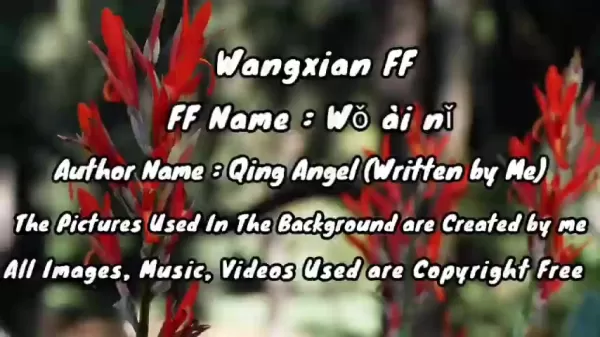 Drama, Betrayal, and Moral Dilemmas Explored in WangXian FF Unveiling
Unraveling the Depths of WangXian FF: A Closer Look at Part 29WangXian FF Part 29 takes us on a gripping journey through a labyrinth of complex relationships, moral quandaries, and the reverberating effects of past decisions. This installment is a rich tapestry of historical drama, personal strife,
Drama, Betrayal, and Moral Dilemmas Explored in WangXian FF Unveiling
Unraveling the Depths of WangXian FF: A Closer Look at Part 29WangXian FF Part 29 takes us on a gripping journey through a labyrinth of complex relationships, moral quandaries, and the reverberating effects of past decisions. This installment is a rich tapestry of historical drama, personal strife,
 Adobe's Future Heavily Impacted by AI Competition Concerns
Adobe, a titan in the creative software industry, is currently grappling with the rapid rise of AI technologies. While the company has made strides in integrating AI into its products, there's growing concern about whether these advancements are translating into revenue quickly enough to keep pace w
Adobe's Future Heavily Impacted by AI Competition Concerns
Adobe, a titan in the creative software industry, is currently grappling with the rapid rise of AI technologies. While the company has made strides in integrating AI into its products, there's growing concern about whether these advancements are translating into revenue quickly enough to keep pace w
